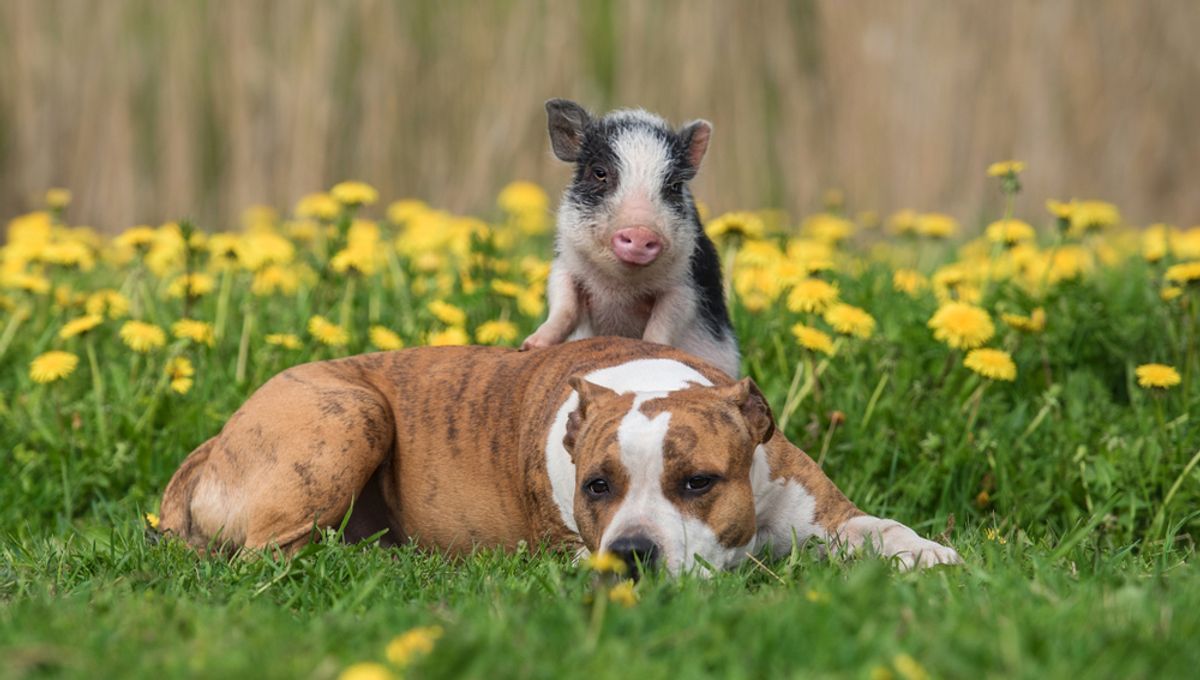
There’s a rather unfair saying about putting lipstick on pigs, although new research would suggest that there’s some truth to the idea that the curly-tailed podgers are indeed immune to sophistication. After conducting a series of experiments, the study authors found that even pigs that had been raised as pets lacked the ability to communicate with their owners, instead maintaining their piggish ways and making a beeline for an edible reward.
Rather than investigating the transformative effects of cosmetics on swine, the researchers set out to determine whether pigs have the capacity for referential communication. This denotes the ability to direct another individual’s attention towards a particular object, just like humans do when they point at something.
“Although we know that dogs are especially skillful in communicating with humans, other animals like horses, cats, and even kangaroos can referentially communicate with us,” explained study author Paula Pérez Fraga in a statement. Crucially, all of these animals rely heavily on visual communication when interacting with other members of their own species.
Pigs, however, don’t go in for much visual communication (hence the lack of make-up), inspiring the study authors to question whether this intelligent species has the capacity to point out objects of interest. They therefore decided to compare the referential communication capabilities of pigs and dogs that had all been socialized and raised as pets since birth.
Animals were placed in a room along with either their owner, a food reward that was locked inside a box, or both their owner and the unobtainable treat. Knowing that their human could easily open the box and remove the food, a communicative pet might be expected to try and direct their owner’s attention toward the trapped goodies.
Sure enough, dogs displayed an increase in referential communication when in the presence of both their owner and the food, signalling for their two-legged companion to open the box. However, the researchers “found no similar behavioral pattern indicative of referential communicative function in pigs.”
“After the experimenter hid the reward, only dogs tried to show their owners where it was,” said study author Attila Andics. “Pigs, in contrast, just tried to find the way to take it themselves.”
Expanding on their findings, the researchers explain that “the lack of referential communicative behaviours in pigs is not caused by a general absence of human-oriented communicative behaviours… [as] pigs and dogs showed a similar amount of human-oriented behaviours when no reward was present, confirming a comparable readiness of the two species to spontaneously attend to humans.”
Despite this, pet pigs’ seeming inability to communicate referentially when trying to obtain food “indicates their lack of readiness to do so.” In other words, despite all their household training, pigs are just too pig-headed to ask their owner for help and would rather persist in trying to snatch the food for themselves.
Overall, this “suggests that domestication or intense human socialization are not sufficient for human-oriented referential communication to emerge in social mammals and that other pre-existing species characteristics such as reliance on visual social signals in intraspecific interactions may have a more determinant role.”
The research is published in the journal Scientific Reports.
Source Link: Dogs Ask Humans For Help But Pigs Just Try And Help Themselves